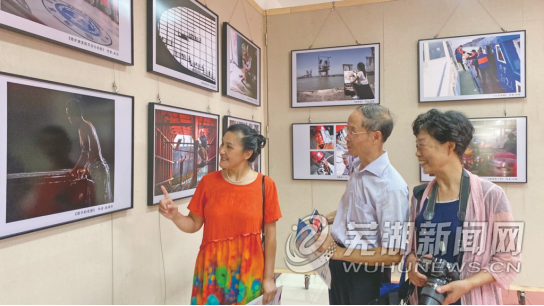SHANGHAI, Sept. 25 (Xinhua) — A new free-trade zone (FTZ) was inaugurated in east China’s Yangtze River Delta on Thursday, along with the expansion of another one, representing new steps to ensure high-quality, integrated development for the region and further momentum for the country’s opening-up.
The two new developments consist of a pilot FTZ in Anhui Province and the expansion of the existing FTZ in Zhejiang Province. Together with similar projects in Jiangsu and Shanghai, they ensure that all four areas of the delta have FTZs, featuring institutional innovations to facilitate trade, investment and business, and undertaking distinctive roles in developing industries.
Thursday also saw the inauguration of two newly approved FTZs beyond the delta region, in Beijing and the central province of Hunan, raising the total of FTZs nationwide to 21.
The pilot FTZ in Anhui will focus on promoting the in-depth integration of scientific and technological innovation and the development of the real economy. It will accelerate the pace of its pioneering role in scientific and technological innovation and the cluster development of advanced manufacturing and strategic emerging industries, and promote the integrated development of the Yangtze River Delta.
The expanded area in Zhejiang will focus on building a new type of international trade center and a global shipping and logistics hub, as well as the construction of a commodity resource allocation base centered on oil and gas. It will also see the construction of a digital economy development demonstration zone and a cluster area for advanced manufacturing industries.
Last year, China unveiled an outline for the regional integrated development of the Yangtze River Delta, which is one of the country’s most economically active, open and innovative regions, producing nearly a quarter of the country’s GDP.
The central authorities expect the entire delta region to provide quality products and serve as a source of high-level technologies to support the national high-quality economic development. The region is also urged to take the lead in forming a new development pattern that takes the domestic market as the mainstay and allows the domestic and foreign markets to boost each other.
The new pilot FTZs, together with the expanded one, will strengthen the industrial and supply chain through scientific and technological innovation and enhance its advancement, stability and competitiveness, while leading the high-quality development of industries, said Wang Shouwen, vice-minister of commerce.
INTEGRATION, HIGH QUALITY
“After having a business meeting in Shanghai in the morning, I take the high-speed train to Hefei for work after lunch, and meet my partners for dinner in the evening. I can return to Shanghai on the same day with a relaxed schedule,” said Qin Lihong, co-founder and president of NIO Inc., a leading Chinese electric-vehicle manufacturer.
With the company’s global headquarters in Shanghai, its China headquarters in Hefei, the provincial capital of Anhui, and a leading new-energy auto-parts manufacturing base in Nanjing, Jiangsu Province, NIO has most of its important institutions in the delta region, forming a highly innovative and efficient layout.
Improved connectivity within the region, such as the opening of new high-speed railways, has facilitated the flow of talents and resources, as well as the integrated development of the region.
Over the past year, local governments in the delta region have launched more than 30 innovative regulations on integrated development, signed more than 120 cooperation agreements, and built more than 60 cooperation platforms, statistics with the regional cooperation office of the Yangtze River Delta showed.
In the first half of this year, Jiangsu’s foreign trade stood at 2 trillion yuan. During the same period, Zhejiang Province reported 1,133 newly established foreign-invested enterprises.
As part of the FTZ in Anhui, its section in Hefei will be developed into a comprehensive national science center and a leading area in industrial innovation, based on industries such as high-end manufacturing, integrated circuits, artificial intelligence and quantum information.
According to Liu Qingfeng, chairman of voice-recognition giant iFlytek in Hefei, a spate of supporting measures introduced in the FTZ plan will bring favorable policies to AI industries in terms of technological innovation and application development.
Meanwhile, the city of Wuhu will focus on industries such as intelligent connected vehicles, intelligent household applications, robots, and cross-border electronic commerce.
Wuhu-based auto-maker Chery Automobile Co. is one of the trail-blazers in developing the intelligent connected vehicle. With its self-developed intelligent connected system featuring facial recognition and remote control, the company continues to make breakthroughs in autonomous vehicles.
Chery Automobile Co. will continue to develop cutting-edge technology and cooperate with external resources to build an open system of innovation, according to company sources.
“The coordinated development of FTZs in the Yangtze River Delta will spur greater momentum,” said Sun Yuanxin, an expert with the Collaborative Innovation Center of China Pilot Free Trade Zone at Shanghai University of Finance and Economics.

